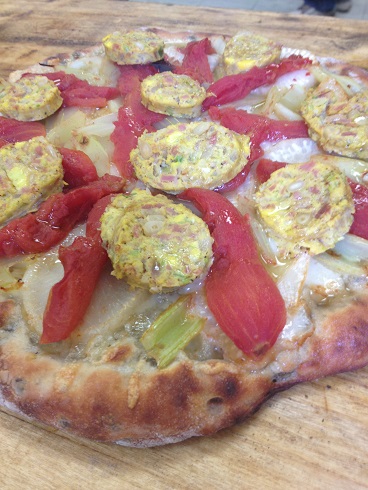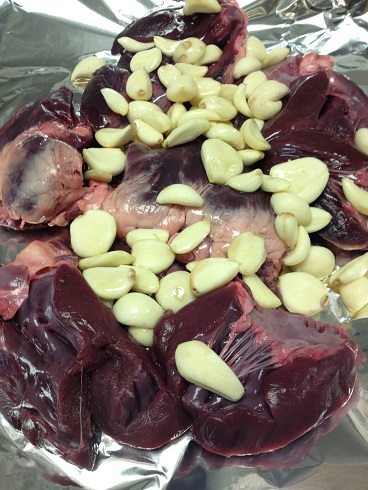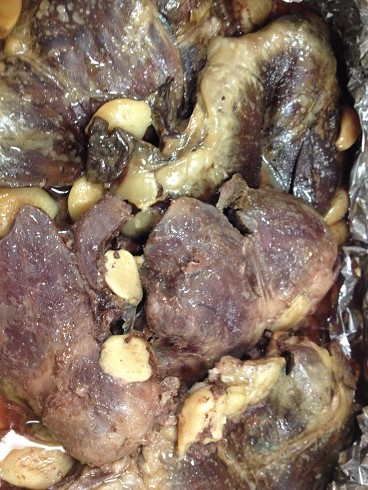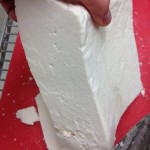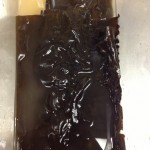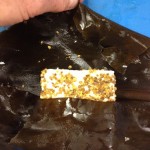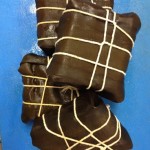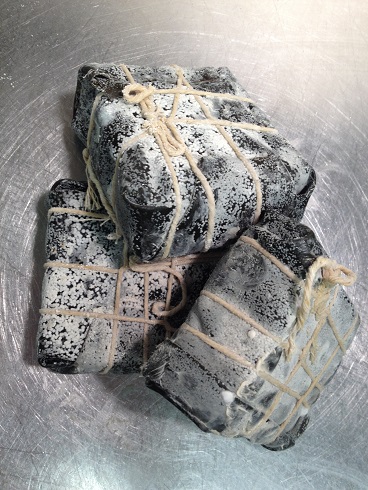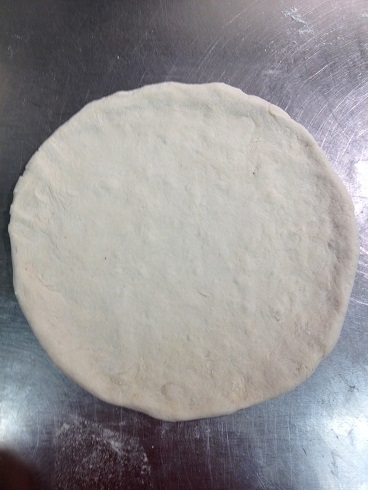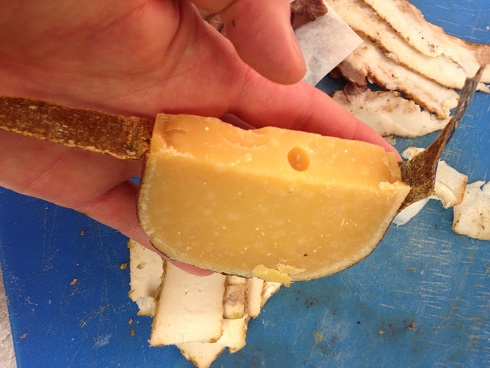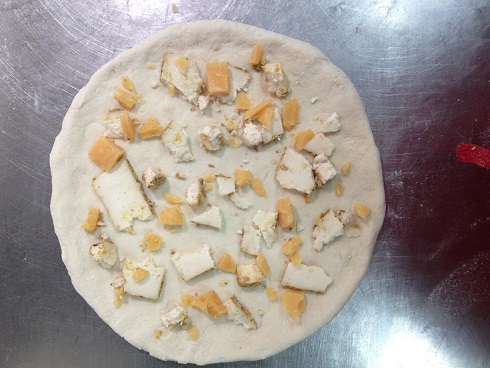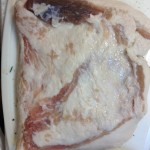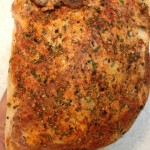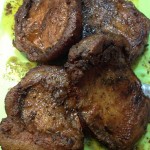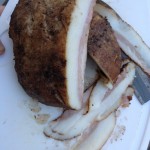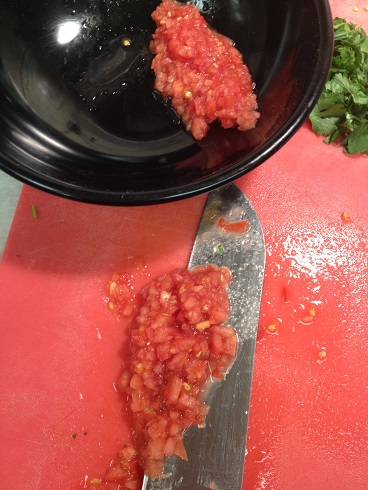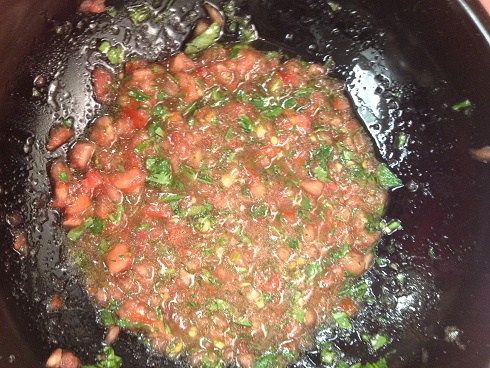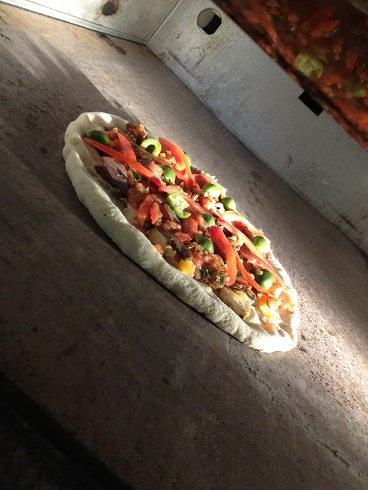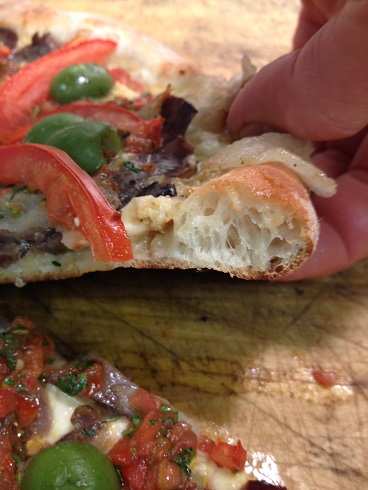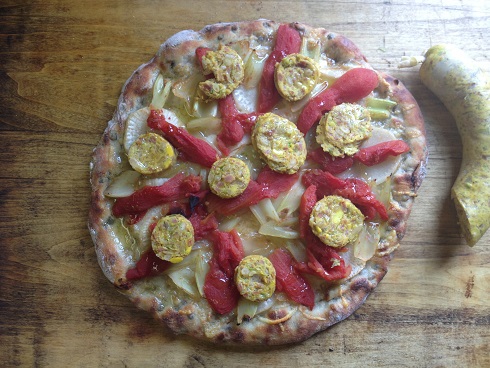
Nothing spells happiness more than a mouthful of green lentils, (well, maybe a mouthful of hundred-dollar bills.). Last week I used some sprouted lentils in my dough that I’ve been using for years in my breads. After finding a fabulous ancient recipe for egg pudding from Egypt, I decided to pair the two and, true to form, made a few modifications.
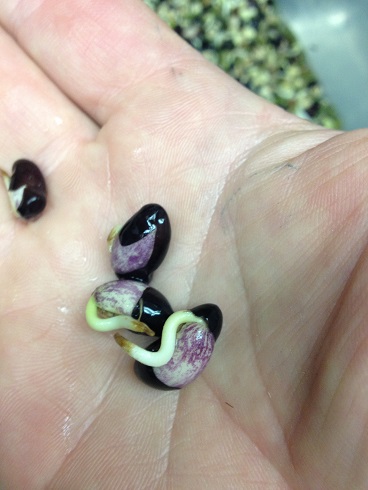
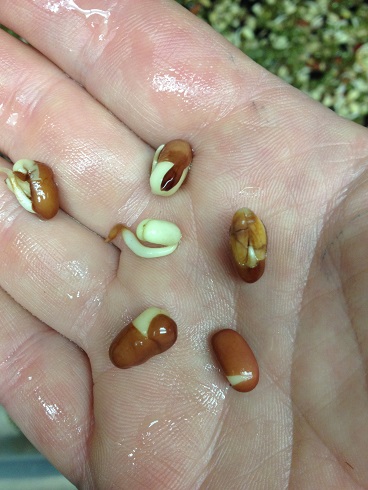
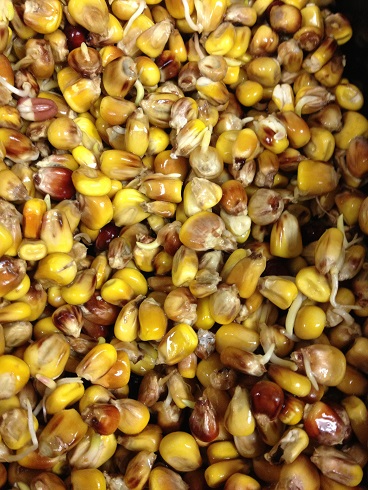
Sprouting is a really cool activity to pair with baking, pickling and drying. My all time favorites besides green French lentils are local, organic black beans, (left), sweet Adzuki beans grown just 20 miles away and of course local sprouted corn adds a great crunch to breads, (right).
The egg pudding recipe called for a mix of leek, garum, (an ancient fish sauce still made today), pine nuts, wine, vinegar and stuffed in an intestine and cooked for a short amount of time. I took the Mark Anthony approach to Cleopatra’s Egyptian recipe and inserted the wonderful Italian Prosciutto di Parma into the mix with Roman abandon. (Metaphorically speaking.) I had some awesome Prosciutto shank that was very fatty and perfect for chopping up into small dice which provided a giant bang of flavor.
This pie captured all the components of a brilliant Colosseum fight combining some cool local vej rarely seen on any pizzas like celery and turnip. These were gently handled and slow cooked in a prosciutto and dashi broth to further enhance the wonderful lentils. Add some sweet Valorosso tomato and “Viola”, a great pie is born.
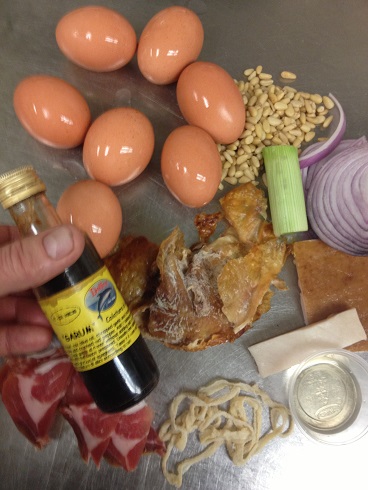
Above is all that I needed to make this great pie.
For the sprouted lentil bread you will need to start four to six days in advance.
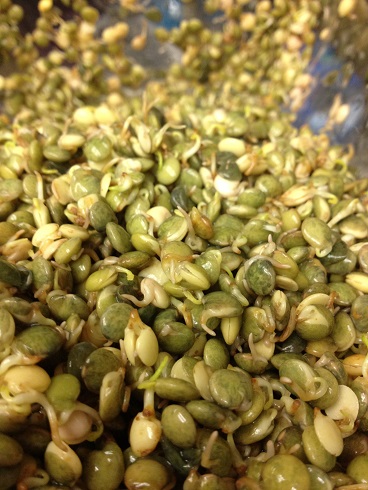
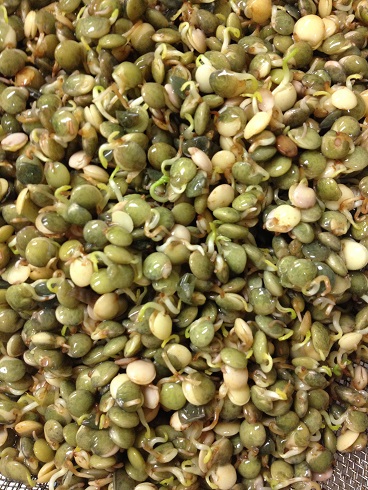
In a sided tray or large jar, pour two cups green lentils. Add room temperature water to cover the lentils and wait for three hours then drain. After drained, toss with your hand to aerate. Leave the lentils in a warm place. Do this three to four times times a day until sprouted.
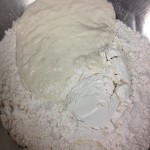
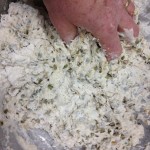
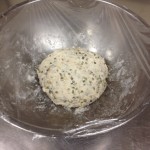
Put four cups high-gluten or bakers flour in a bowl. Add two cups of a natural pre-ferment (follow the steps until the dough ball is made- this is a naturally active pre-ferment) that has been fed the night before and is at a 90 percent hydration, two cups of water and the sprouted lentils that have been strained along with one tablespoon of salt. Knead into a ball in the bowl and cover with plastic wrap. Set in a warm area for 30 minutes to let the natural yeasts activate.

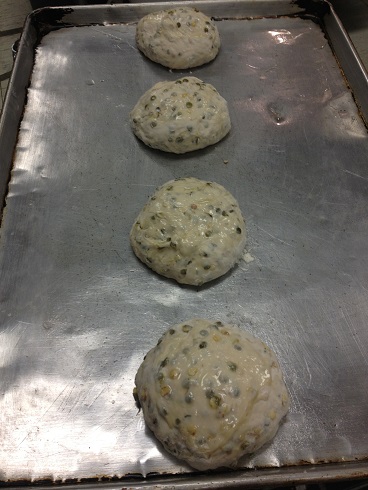
After the bulk fermentation, cut the dough into four balls. They should all weigh 15 ounces. (Shoulda, coulda, woulda.) Oil each dough ball with extra virgin olive oil and top with plastic wrap. Place in a refrigerator for one, two or three days. By this naturally slow fermentation, you will make the dough more digestible, the gluten strands will have more time to form a good “net” and the crust will become crisper.
For the Egyptian egg pudding sausage:
3 ounces of large diced skin from a ham of Prosciutto di Parma
2 ounces finely chopped Chicken skin diced fine
3 tablespoons toasted pine nuts
One quarter of a leek (1 ounce)
2 ounces red onion
2 ounces of Prosciutto di Parma flesh and fat, chopped fine
2 tablespoons rice wine vinegar
1 tablespoon Garum, (Thai fish sauce is acceptable as substitute)
One natural casing from a pigs intestine

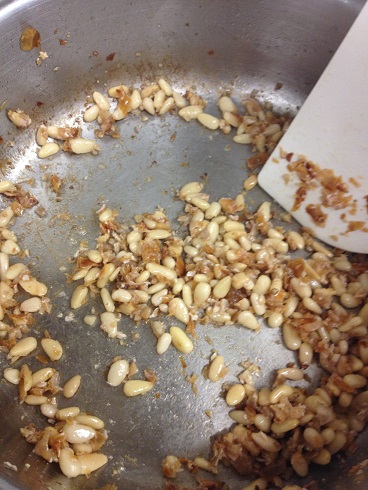
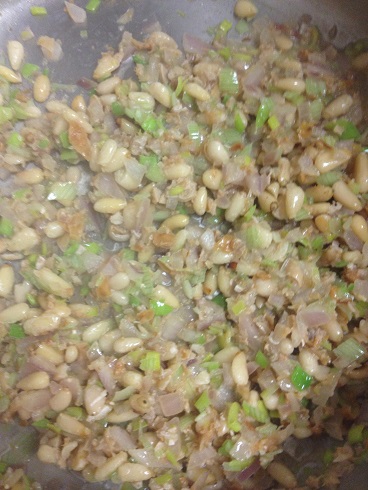
Place the Prosciutto skin in a pan under medium heat and let it melt. If it starts to smoke too much, turn the heat down. The priority is to get as much fat and flavor from the skin as possible. Remove the Prosciutto skin and immediately add the chopped chicken skin as well as the pine nuts and turn to medium high heat. Cook and stir for six minutes then add the chopped leek, onion, chopped Prosciutto di Parma as well as two tablespoons of water. Let simmer for another six minutes or until the leeks and onions are cooked, limp and transparent.
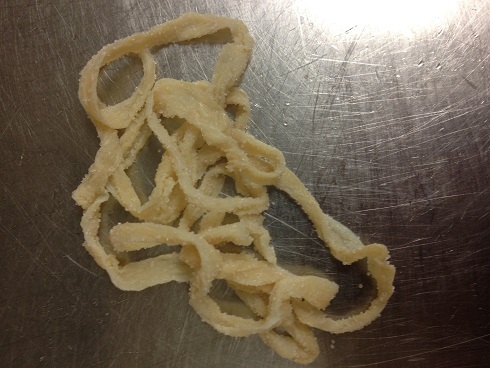
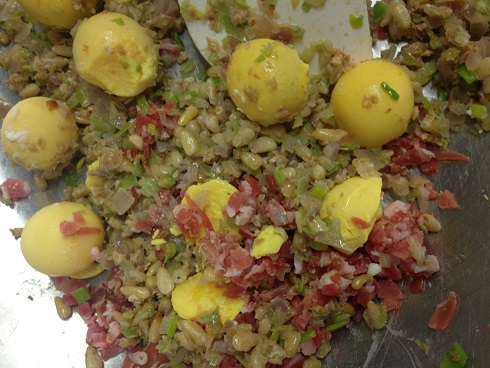
Place the pigs intestine in warm water to hydrate the casing. Pour all ingredients (including the hard-boiled egg yolk and finely diced Prosciutto di Parma) into a bowl and smash-mix with a large spoon or the end of dough roller.
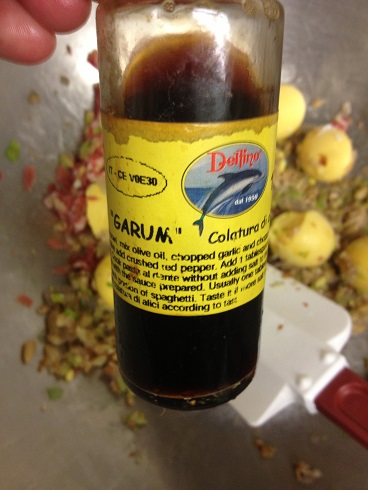

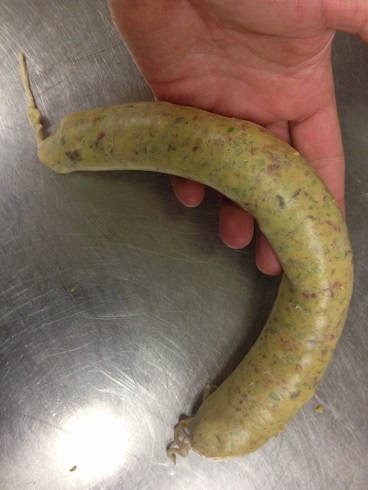
Add the Garum and rice wine vinegar and meld all the smashed ingredients together. Tie one end of the sausage tightly and, using a sausage-stuffing flange, stuff the casing with the pudding. If you do not have a flange, you can use a funnel or hollow device. (These will be problematic because of the air bubbles that will form in between stuffing.)
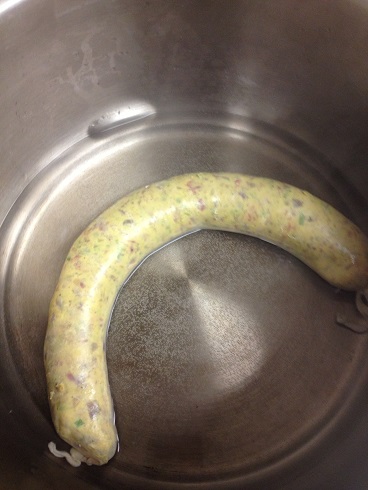
Place the egg pudding sausage into a half-inch of water that is very hot but not yet boiling. Cook to set the pudding while turning the sausage frequently to make sure the water does not get hot enough to pop the skin.
For the toppings: At this point, pre-heat your oven to 495 degrees with an upturned heavy gauge cookie sheet turned upside down.
5 thin slices the size a half dollar of Prosciutto di Parma
Two cups water
Two tablespoons Katuobushi, (dried bonito flakes)
Three celery stalks, outsides peeled to get rid of heavy strings
One medium sized turnip
Five large pear tomatoes like Stanislaus Valorosso or San Marzano
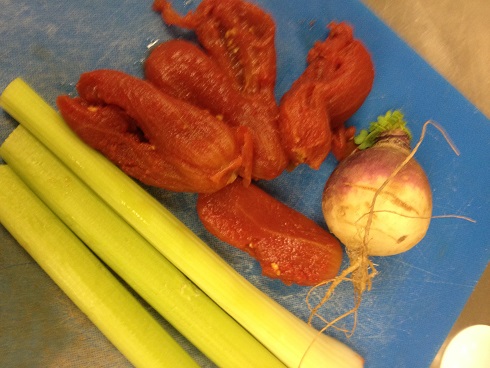
Peel and cut turnip into thin, coin-shaped discs using a mandolin or knife. Peel the celery so there are no major strings then cut on the bias into small pieces. Deseed the tomatoes and pull apart into strips.
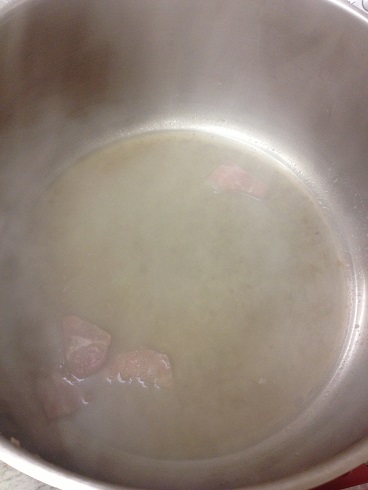
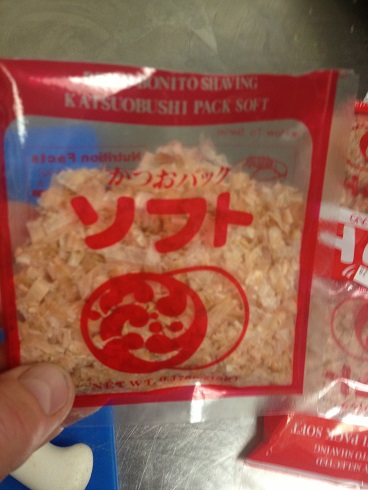
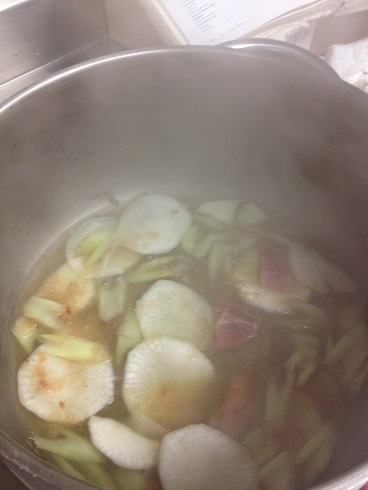
Place the Prosciutto di parma slices in a medium high pan with one tablespoon of extra virgin olive oil. Cook for four minutes then add two cups of water. Bring to a boil and add two tablespoons of Katsuobushi, (dried bonito flakes).
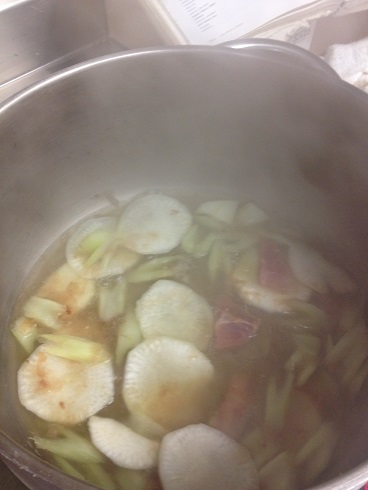
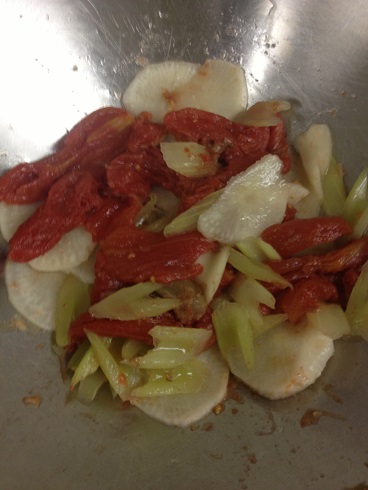
Add the turnips and celery to the dashi broth and cook until the turnip is tender. The dashi stock will now be very reduced almost to nothing. take the vegetables out of the pan and into a bowl to marinate with the tomato. Toss to coat and remove the prosciutto.
Finally, the Pizza: First Re-check the oven to see if it is ready to go.
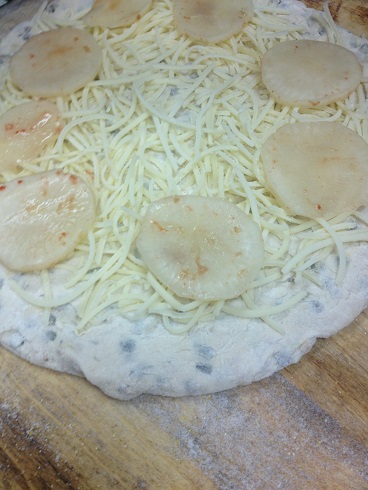
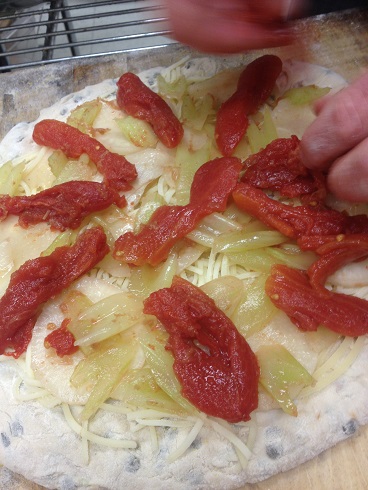
Form the pizza in a disc on a piece of parchment paper. Place three ounces of Gruyere cheese on the lentil crust. Add the turnip, celery and tomato.
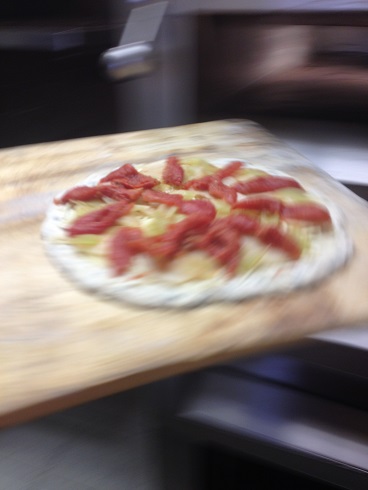
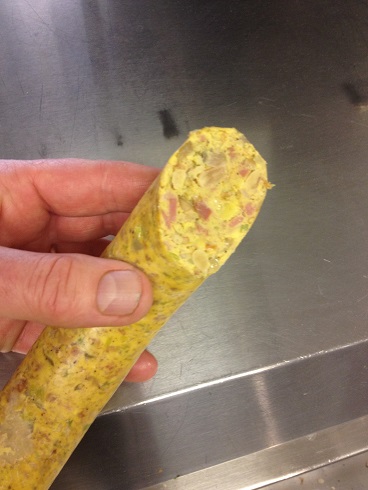
Place the pizza in the oven. Cut the egg pudding sausage on the bias. After six minutes in the oven, pull the pizza out and place the egg pudding around the pie. Cook for another six to eight minutes until the crust is done, the cheese melted and the egg pudding is piping hot.
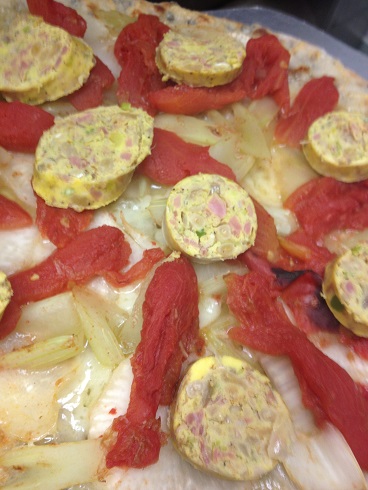
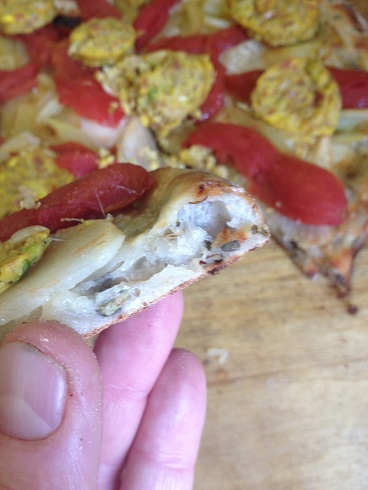
This pizza is a lot of work but it had a world shaking taste!
